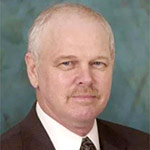As I was reading Bill Hudson’s column about the tax-lien property for sale by Archuleta County, I was struck by one sentence.
Bill wrote: “The properties are located in an insufficiently-developed subdivision called Pagosa Trails, platted maybe 40 years ago”.
I added the emphasis on the “40 years ago”, because I can relate.
As with all properties we buy, when we negotiated the purchase of our Aspen Springs land, we required a survey at the seller’s expense as a condition of the contract. Buying without a survey — especially rural vacant land — is asking for an unpleasant surprise.
Our transaction illustrated that caveat.
The seller (a Pagosa realtor) advised that it was customary (and more economical) to simply do a “pin locate”, to identify the marked perimeter of the property, rather than a full blown survey. After an explanation of the difference, we agreed to the “locate” — but left the full survey clause in the contract.
(As an aside, whenever we engage in buying real estate, Mrs. Beatty, who is master-haggler, negotiates the price. I only get involved when it comes time to negotiate the terms — and I never reveal that I’m a lawyer.)
A couple of weeks later, the seller contacted us to say he wanted to void the contract and return our full purchase price — which we’d already paid into escrow. Because we had purchased at an obviously distress-sale price, we placed the full amount into escrow in anticipation of the seller wanting to back out.
When asked why, the seller became evasive. He finally acknowledge there was “a problem with the survey”, and referred me to the surveyor.
The surveyor (very honestly, I want to emphasize) explained the problem. Following is the tale he told of the original survey of Aspen Springs (the escrow closing agent for the deal, a Pagosa native, reluctantly corroborated the substance of the tale):
The original subdivision survey of Aspen Springs was done in the 1970’s by the only surveyor in Archuleta County at the time. He was a drinker who later lost his state surveyor’s license.
Our surveyor provided us a copy of the original Aspen Springs plat map — with his corrections marked. He explained that some of the property lines on the map, including the corner monument pins on our parcel, were improperly located – as were the boundaries of all the adjoining parcels on our part of the road (Buttercup Drive).
He said it was what happens if you try to (literally) “cut corners” while surveying across hills and arroyos. Ours parcel includes the hilltop on the cul-de-sac, with arroyos on two sides.
Apparently the other owners of parcels on that stretch of the road (including our seller) had simply relied on the official map, and never requested a survey or even a pin locate. So the errors went undetected — until we exposed them in 2000.
The surveyor told me that when the seller was advised of the discrepancy and the cost of a full survey to correct the property lines, he declined to pay for the survey. At that point the seller offered to void the contract and refund our money. But we didn’t want our money back; we wanted the property.
To make a long story short, after I assured the surveyor that his fee for a full survey would be paid out of the purchase price that was already in escrow, and explained to the seller the additional cost he’d incur from a suit for ‘specific performance’ of the contract (including the survey clause), he decided it was cheaper to pay the cost of the full survey and close on the sale to us. The corrected pin locations slightly expanded the size of our parcel.
So when Bill wrote that the properties the county is selling were platted “maybe 40 years ago” it occurred to me the plat may have been by the same drunk surveyor who platted Aspen Springs. I suggest the county get a survey, or at least a “pin locate”, so they know exactly what they are selling.
It could be cheaper than having to litigate a property line dispute later.

